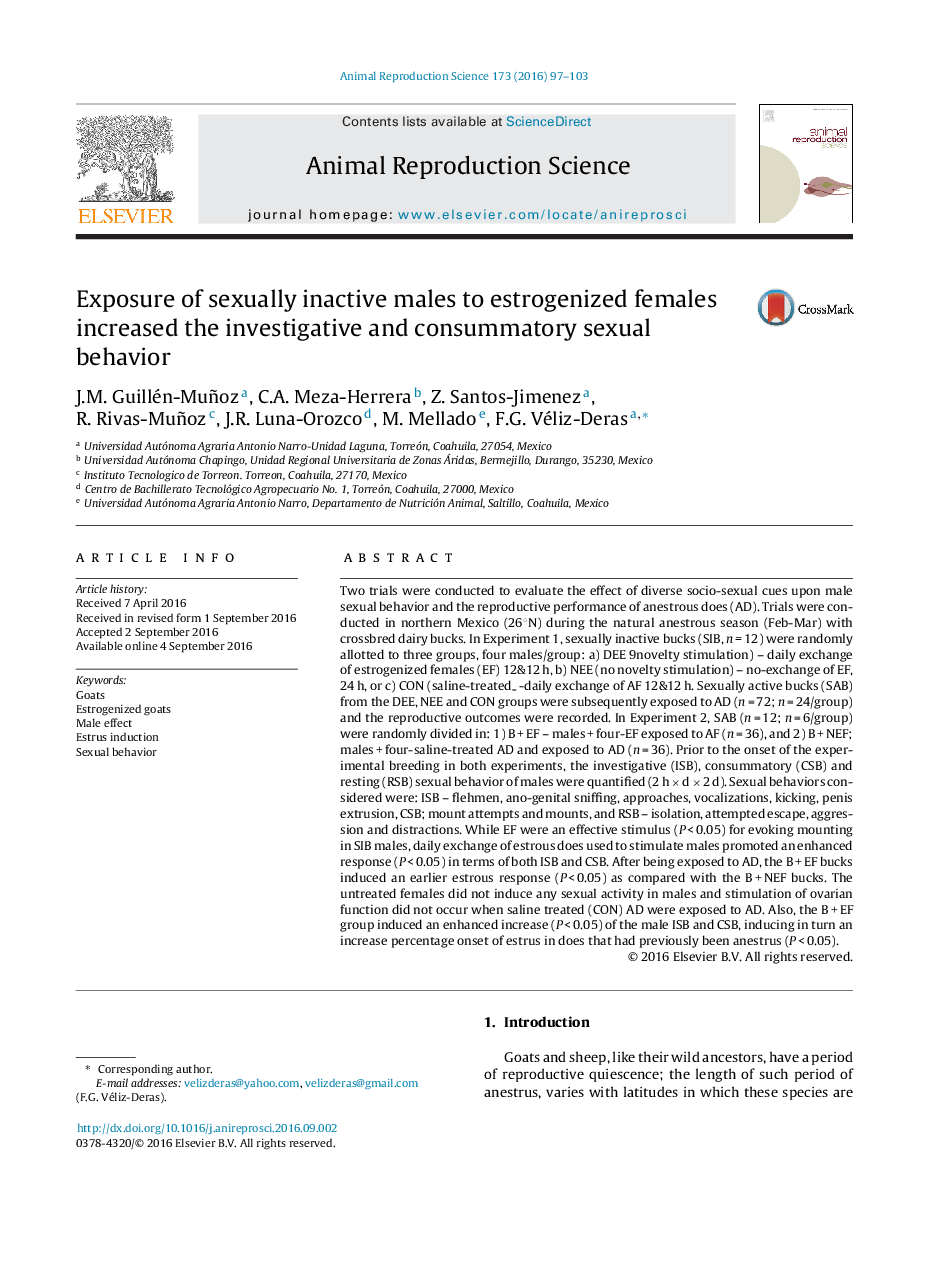| کد مقاله | کد نشریه | سال انتشار | مقاله انگلیسی | نسخه تمام متن |
|---|---|---|---|---|
| 5520391 | 1544704 | 2016 | 7 صفحه PDF | دانلود رایگان |
Two trials were conducted to evaluate the effect of diverse socio-sexual cues upon male sexual behavior and the reproductive performance of anestrous does (AD). Trials were conducted in northern Mexico (26°N) during the natural anestrous season (Feb-Mar) with crossbred dairy bucks. In Experiment 1, sexually inactive bucks (SIB, n = 12) were randomly allotted to three groups, four males/group: a) DEE 9novelty stimulation) - daily exchange of estrogenized females (EF) 12&12 h, b) NEE (no novelty stimulation) - no-exchange of EF, 24 h, or c) CON (saline-treated_ -daily exchange of AF 12&12 h. Sexually active bucks (SAB) from the DEE, NEE and CON groups were subsequently exposed to AD (n = 72; n = 24/group) and the reproductive outcomes were recorded. In Experiment 2, SAB (n = 12; n = 6/group) were randomly divided in: 1) B + EF - males + four-EF exposed to AF (n = 36), and 2) B + NEF; males + four-saline-treated AD and exposed to AD (n = 36). Prior to the onset of the experimental breeding in both experiments, the investigative (ISB), consummatory (CSB) and resting (RSB) sexual behavior of males were quantified (2 h Ã d Ã 2 d). Sexual behaviors considered were: ISB - flehmen, ano-genital sniffing, approaches, vocalizations, kicking, penis extrusion, CSB; mount attempts and mounts, and RSB - isolation, attempted escape, aggression and distractions. While EF were an effective stimulus (P < 0.05) for evoking mounting in SIB males, daily exchange of estrous does used to stimulate males promoted an enhanced response (P < 0.05) in terms of both ISB and CSB. After being exposed to AD, the B + EF bucks induced an earlier estrous response (P < 0.05) as compared with the B + NEF bucks. The untreated females did not induce any sexual activity in males and stimulation of ovarian function did not occur when saline treated (CON) AD were exposed to AD. Also, the B + EF group induced an enhanced increase (P < 0.05) of the male ISB and CSB, inducing in turn an increase percentage onset of estrus in does that had previously been anestrus (P < 0.05).
Journal: Animal Reproduction Science - Volume 173, October 2016, Pages 97-103
